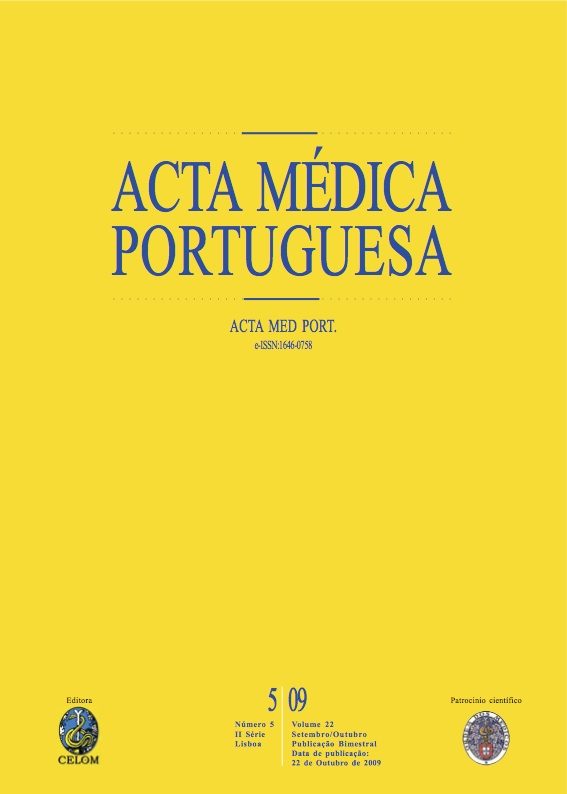Avaliação da amplitude de movimento de ombro após tratamento de cancro da mama.
DOI:
https://doi.org/10.20344/amp.1716Resumo
Treatment of breast cancer generally involves quadrantectomy and mastectomy followed by radiotherapy and chemotherapy depending on indication. The object of the present study was to verify the extent of movement of the shoulder after breast cancer treatment and the influence of the type of surgery (quadrantectomy and mastectomy). A total of 90 women submitted to surgery for breast cancer in the Region of Catanduva, Brazil and a control group of 20 women without surgical compromise were evaluated. The extents of bilateral flexion and abduction movements of the shoulders were assessed by goniometry. The non-matched student t-test and Fisher exact test were utilized for statistical analysis with an alpha error of up to 5% being considered acceptable. Differences of 20 degrees or more in the extent of movement of the shoulders of women submitted to surgery were seen in 47.7% of the cases for flexion and in 56.6% for abduction. The compromise to the movement of the shoulder in the control group was less than 20 degrees in 9 (45%) of the women. On comparing the incidence of alterations in the movements of the arms of women submitted to surgery with the control group, a significant difference was identified for both limbs (p-value < 0.01). The articular mobility of both arms of patients submitted to treatment for breast cancer can be affected.Downloads
Downloads
Como Citar
Edição
Secção
Licença
Todos os artigos publicados na AMP são de acesso aberto e cumprem os requisitos das agências de financiamento ou instituições académicas. Relativamente à utilização por terceiros a AMP rege-se pelos termos da licença Creative Commons ‘Atribuição – Uso Não-Comercial – (CC-BY-NC)’.
É da responsabilidade do autor obter permissão para reproduzir figuras, tabelas, etc., de outras publicações. Após a aceitação de um artigo, os autores serão convidados a preencher uma “Declaração de Responsabilidade Autoral e Partilha de Direitos de Autor “(http://www.actamedicaportuguesa.com/info/AMP-NormasPublicacao.pdf) e a “Declaração de Potenciais Conflitos de Interesse” (http://www.icmje.org/conflicts-of-interest) do ICMJE. Será enviado um e-mail ao autor correspondente, confirmando a receção do manuscrito.
Após a publicação, os autores ficam autorizados a disponibilizar os seus artigos em repositórios das suas instituições de origem, desde que mencionem sempre onde foram publicados e de acordo com a licença Creative Commons









